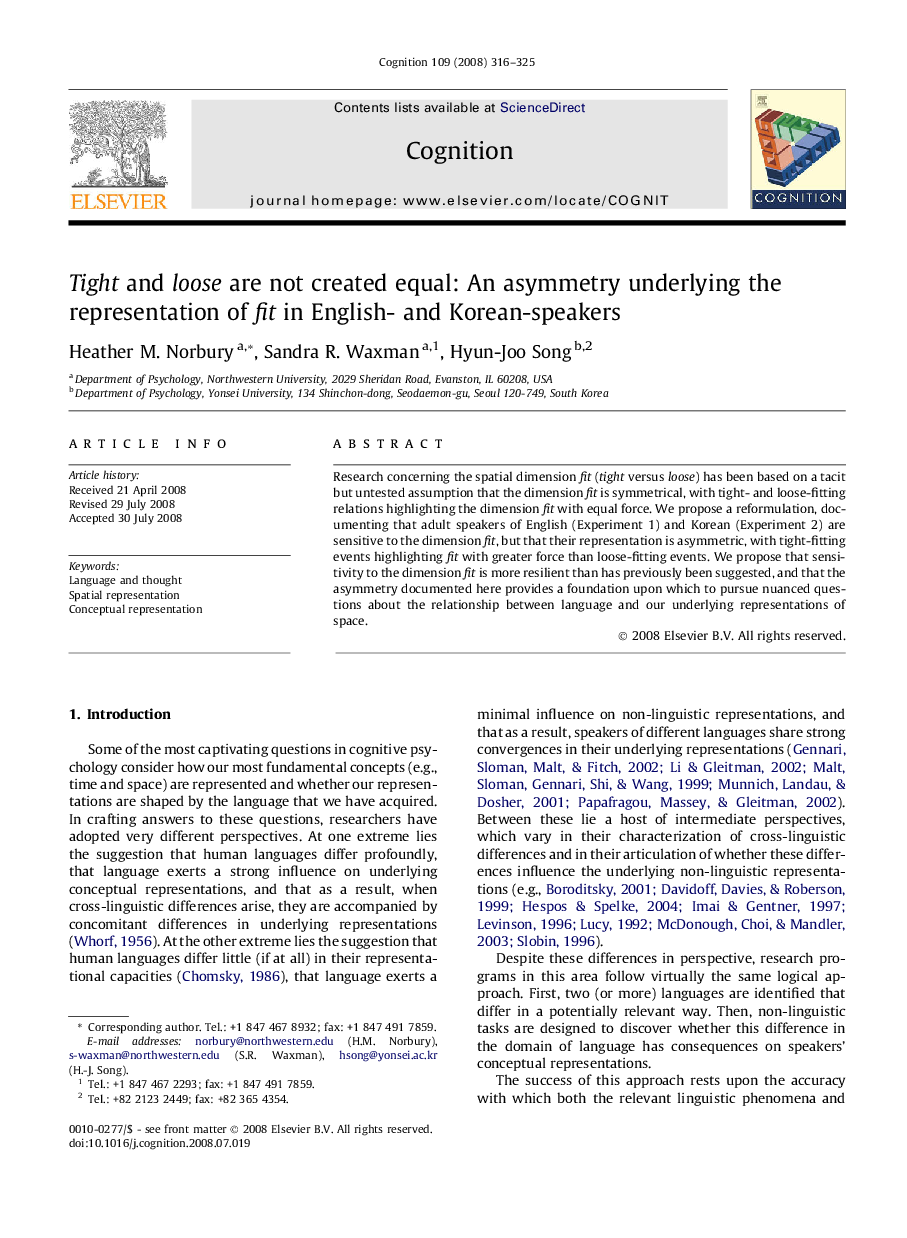| Article ID | Journal | Published Year | Pages | File Type |
|---|---|---|---|---|
| 927057 | Cognition | 2008 | 10 Pages |
Research concerning the spatial dimension fit (tight versus loose) has been based on a tacit but untested assumption that the dimension fit is symmetrical, with tight- and loose-fitting relations highlighting the dimension fit with equal force. We propose a reformulation, documenting that adult speakers of English (Experiment 1) and Korean (Experiment 2) are sensitive to the dimension fit, but that their representation is asymmetric, with tight-fitting events highlighting fit with greater force than loose-fitting events. We propose that sensitivity to the dimension fit is more resilient than has previously been suggested, and that the asymmetry documented here provides a foundation upon which to pursue nuanced questions about the relationship between language and our underlying representations of space.
